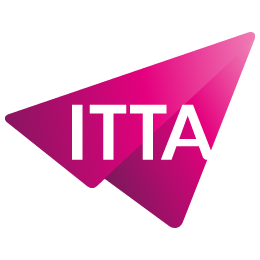Home > Identifying and closing the skills gap: how companies can stay competitive in the marketplace
In a constantly changing world, companies must constantly adapt to remain competitive. One of the keys to this competitiveness is the ability to fill the skills gaps of employees. In the face of changing markets and emerging technologies, the skills required to maintain optimal performance are changing rapidly, creating gaps between employees’ current skills and those needed to meet future challenges.
Continuing education plays a crucial role in helping companies fill these gaps and adapt to market changes. By investing in employee skills development, companies can not only improve performance and productivity, but also attract and retain talent and remain agile in the face of innovation. In this article, we will explore how companies can identify skill gaps and implement continuous learning strategies to ensure their competitiveness in the marketplace.
The first step in closing the skills gap is to assess employees’ current skills. This will allow the company to understand where the strengths and weaknesses of their team lie. This can be done through regular evaluations, individual interviews and self-evaluations. These assessments can be based on criteria such as technical skills, teamwork, communication and problem solving.
Once the existing skills have been assessed, it is important to analyze the company’s future needs in terms of skills. This involves identifying market trends, technological developments and regulatory changes that could impact the company. In addition, it is essential to consider the company’s long-term goals and determine the skills needed to achieve them. This analysis must be conducted in close collaboration with managers and decision makers to ensure that it reflects the real needs of the company.
After assessing existing skills and analyzing future needs, the company will be able to identify the gaps between the two. It is important to prioritize these gaps according to their impact on the company’s performance and to determine which ones require immediate intervention. Companies can use tools such as competency matrices to visualize these gaps and help make decisions about what training to put in place.
Once the skill gaps have been identified, it is time to establish clear and measurable training objectives to close those gaps. These objectives must be aligned with the company’s priorities and contribute to its long-term growth. It is essential to involve the employees concerned in the definition of these objectives, to ensure that they understand the importance of the training and are motivated to participate.
Based on the defined training objectives, the most appropriate training courses should be selected to fill the identified gaps. Companies can opt for online, face-to-face, or blended training, depending on their budget constraints and employee availability. It is also important to select quality training courses, given by experienced trainers who are recognized in their field. Training planning must take into account the company’s operational constraints and the availability of employees to minimize disruptions to productivity.
Creating a supportive learning environment within the company is crucial to effective training. This can be achieved by providing a dedicated training space, promoting a culture of continuous learning and supporting managers to encourage employee participation in training. In addition, it is important to regularly monitor employee progress to evaluate the effectiveness of training and adjust the training plan if necessary. Individual interviews, competency tests and satisfaction surveys can be used to measure the impact of training on employee skills and motivation. Translated with www.DeepL.com/Translator (free version)
After the training plan is implemented, it is essential to evaluate the results to determine if the training objectives have been met and if skill gaps have been filled. This can be done using indicators such as training completion rates, competency test scores and feedback from employees and managers on observed improvements. The evaluation of the results should also take into account the impact of the training on the company’s performance, such as improved productivity, reduced errors or increased customer satisfaction.
Based on the results, it may be necessary to adjust the training strategy to better meet the needs of the company and its employees. This may involve modifying training content, changing learning methods or rethinking training objectives. It is important to listen to employee feedback and stay informed of market developments and new technologies to adapt the training strategy accordingly.
Finally, to guarantee the company’s long-term competitiveness, it is crucial to integrate continuous training into the corporate culture. This means encouraging and valuing continuous learning, recognizing the efforts of employees who train, and investing regularly in the development of the team’s skills. By establishing a culture of continuous learning, the company will be able to anticipate market changes, adapt quickly to new technologies and remain competitive.
In conclusion, identifying and filling skills gaps is essential for companies to remain competitive in the marketplace. Developing the right training strategy and implementing an effective training plan ensures that employees have the necessary skills to meet current and future challenges.
Integrating continuing education into the corporate culture and closely monitoring technological developments and market trends allows companies to anticipate skill needs and adapt quickly to change. Technology watch and attention to market trends are crucial to remain competitive and agile in a constantly changing environment.
ITTA can be a valuable partner in this process, offering quality training in various fields, adapted to the specific needs of each company. Contact ITTA to discuss your training needs and find out how their training solutions can help you strengthen your team’s skills and stay competitive in the marketplace.

ITTA is the leader in IT training and project management solutions and services in French-speaking Switzerland.
Our latest posts
Subscribe to the newsletter

Nous utilisons des cookies afin de vous garantir une expérience de navigation fluide, agréable et entièrement sécurisée sur notre site. Ces cookies nous permettent d’analyser et d’améliorer nos services en continu, afin de mieux répondre à vos attentes.
Monday to Friday
8:30 AM to 6:00 PM
Tel. 058 307 73 00
ITTA
Route des jeunes 35
1227 Carouge, Suisse
Monday to Friday, from 8:30 am to 06:00 pm.